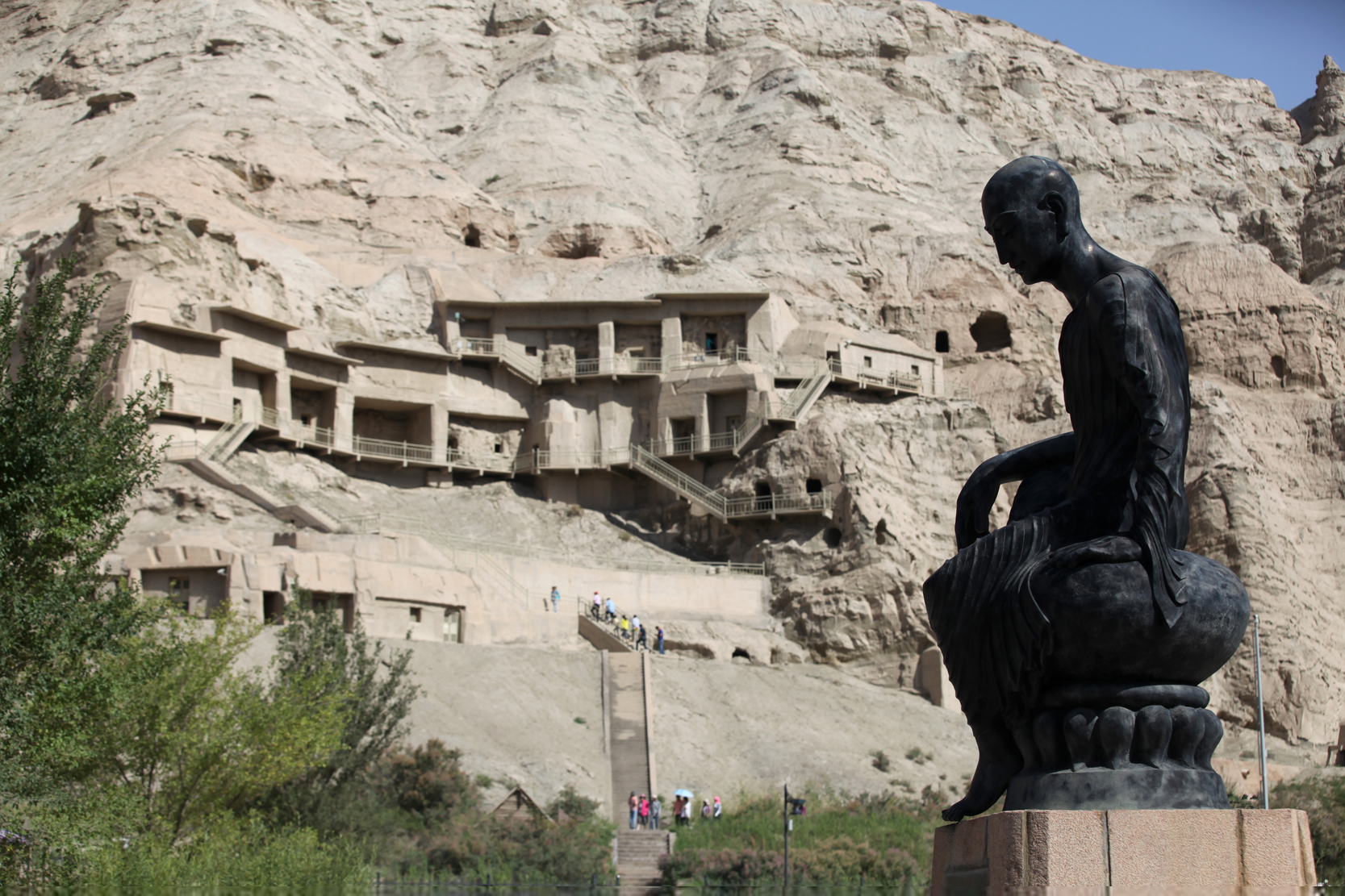Experts review China’s role in Silk Road construction

Located in the Xinjiang Uygur Autonomous Region, the Kizil Grottoes is one of the famous historical sites along the Silk Road. China, Kyrgyzstan and Kazakhstan successfully lobbied for the Silk Road to become a UNESCO World Heritage Site in 2014.
With the implementation of the “One Belt, One Road” initiative, or Silk Road Economic Belt and 21st Century Maritime Silk Road, construction of the ancient Silk Road has reignited interest among Chinese academia. Numerous historical materials reveal that China played an indispensible role in the ancient Silk Road construction.
In 1877, the term “Silk Road” was coined by German geographer Ferdinand von Richthofen (1833-1905) in his book China: The Results of My Travels and the Studies Based Thereon. Over the past century, the term has been widely accepted by Chinese and foreign academia.
China is the ancient home of silk. In 1926, half of a silkworm cocoon was recovered from the Xiyincun Historical Site in Xia County, Shanxi Province. Some silk products were excavated from the Qianshanyang Historical Site, also from the Neolithic Age, in Zhejiang Province. According to these findings, some experts claim China first used natural silk 4,000 to 5,000 years ago.
Ancient Chinese made great contributions to the construction of the ancient Silk Road. Frances Wood, former curator of the Department of Chinese Collections at the British Library, said that there were two routes from at least the first century linking China’s capital city to the Western Regions including Central and West Asia. Famous historian Bangu (32-92) described these two routes in his book The Book of Han (Hanshu), referring to them as the southern and northern routes.
The ancient Silk Road provided a good channel for diplomatic, technical, religious and artistic communication, rather than just being used for trading silk products. Lin Meicun, a professor from the School of Archaeology and Museology at Peking University, said that the ancient Silk Road was a channel for cultural communication between China and countries of South and West Asia as well as of North Africa and Europe, with trade as the major medium.
In China, experts and scholars have long researched the ancient Silk Road. Scholars adopted the term “Silk Road” in the latter half of the 20th century.
Meng Fanren, a research fellow from the Institute of Archaeology at the Chinese Academy of Social Sciences, said that the silk trade was just one element that promoted the development of the ancient Silk Road. Because the term “Silk Road” has been widely accepted by the public, it is unnecessary to change it, added Meng.
Some jade products unearthed from the Tomb of Fuhao at Yinxu (the ruins of the Shang Dynasty capital Yi) in Anyang, Henan Province, reveal that East-West communication started before the Western Han Dynasty (206 BC-AD 25).
During the reign of Emperor Wu of Han (141-87 BC), Zhang Qian (164-114 BC) visited the Western Regions twice, promoting communication between the Western Han Dynasty and states of the Western Regions. Sima Qian (145-87 BC), an ancient historian, gave a high evaluation of Zhang’s visits in his book Records of the Grand Historian (Shiji).
Before Zhang’s visits, there was limited regional communication between the states along the Silk Road. His legacy is communication between the East and the West.
Since the Western Han Dynasty, successive dynasties continued to communicate with the Western Regions, peaking in the Tang Dynasty (618-907). In this sense, China’s contributions to the construction of the ancient Silk Road cannot be underestimated.
In 2014, China, Kyrgyzstan and Kazakhstan successfully lobbied for the Silk Road to become a UNESCO World Heritage Site. Nowadays, the proposal and implementation of the “One Belt, One Road” initiative has given modern importance to the ancient Silk Road.
Silk Road studies have led to research achievements in many disciplines and promoted their development. Some experts claim that future research will make further advances and be promoted.
Liu Yingsheng, a professor from the History Department at Nanjing University, said that nations and civilizations along the Silk Road have all made contributions worthy of studying to its development. “Research of the Silk Road is largely related to China’s cultural security and social development,” said Liu.
Zhang Chunhai is a reporter at the Chinese Social Sciences Today.

 PRINT
PRINT CLOSE
CLOSE